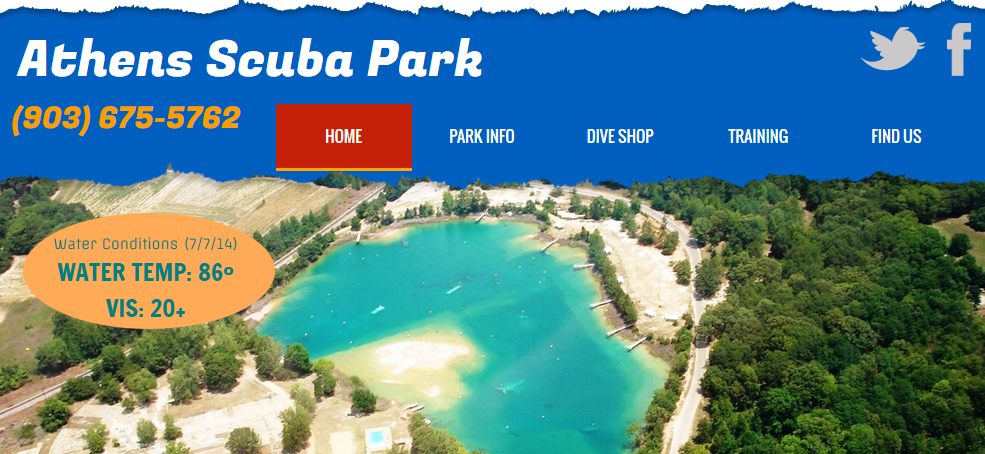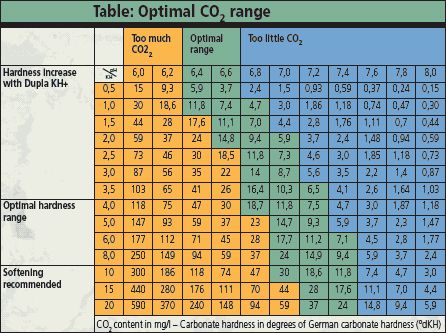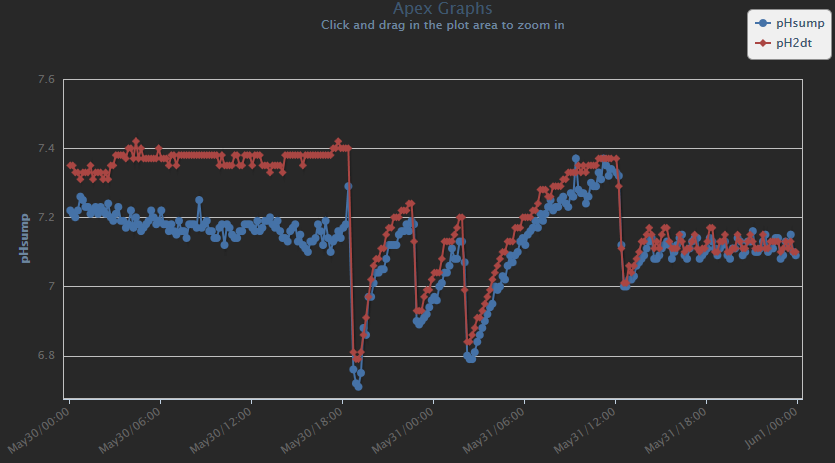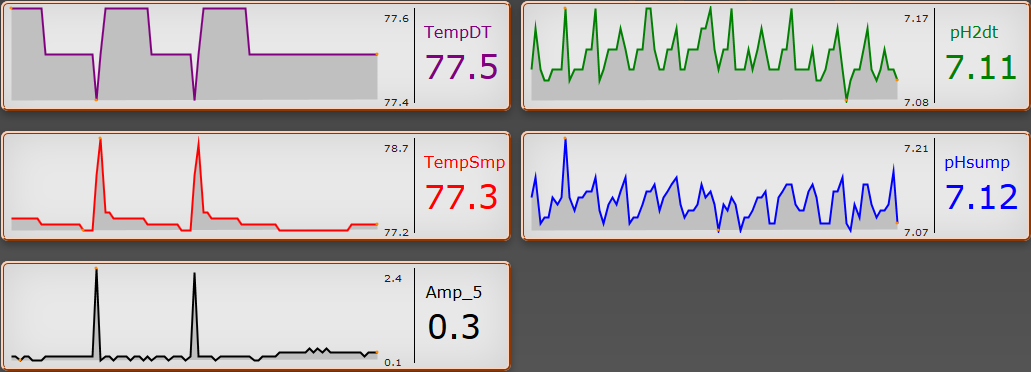-
Posts
1,082 -
Joined
-
Last visited
Content Type
Profiles
Forums
Store
Gallery
Events
Local Fish Stores
FAQ
Blogs
Downloads
Posts posted by George Monnat Jr
-
-
Hmm, would there be any conflict since the scuba trip is being organized by SA Scuba Shack?
If no ARC members can go, you should post on Scubaland's Facebook site asking for a roommate. Or I can do it for you.
How can they complain if you're finding a local buddy? I'm in three different SCUBA dive clubs in Central Texas, and no one has ever complained when I get cross over divers. The good shops know they are competing against snorkeling, biking, rock climbing, team sports, shooting, sky diving, etc. not each other.
-
I'd go with you, but my wife would be jealous. We may go as a couple, though. If no ARC members can go, you should post on Scubaland's Facebook site asking for a roommate. Or I can do it for you.
-
My wife and I finally dove Athens Scuba Park in Athens, TX a couple of months ago. It was four dives in May 2014. I was reminded by a news story I ran across.
Overall, it's a great place to dive, if you don't mind a 3-4 hour drive from Austin. The local hotels have discount rates for divers there, so you can get a decent hotel room for cheap (we stayed at the Super 8 and were very pleased, especially since we could keep our dog with us).
Their web site clearly shows water temperature and visibility. As of this posting, it was:

Updated: 08JUL2014
Facilities: excellent; Right by the water are a dive shop, change rooms, a washing station, parking near the water, lots of pontoon piers, etc. They even have a dog cage (I called it 'doggy prison') that you can use, and they allowed us to keep our dog nearby in his crate. The emplyees were very friendly and helpful.
Accessibility: excellent (unless you include the drive from Austin); you can walk right off one of the many piers right into the water.
Cost: moderate; $20/diver/day (pretty standard price)
Visibility: excellent for green water on most days; if it hasn't rained recently, typically 20+ feet. I've heard it can get to 40+ feet, but there's always the chance that a large class or classes will come through and muck up that fine silt. Without flow, it can stay mucked up for awhile.
Variety of Sites: excellent for man-made (see Obstacles) but poor for natural;
Wildlife: poor; the high (basic) pH means no fish or really any wildlife to speak of - a few strands of tenacious algae is present but not even much of that. It makes for very clear, pretty blue water, though.
Obstacles (things to see, swim through, etc.): excellent; we ran into the newly sunk airplane which was cool. They have other airplanes, tons of boats, motorcycles, a DART bus with cave-practice tunnels attached, etc. I think they have the best 'wreck-diving' park in Texas, as mentioned in the news story.
-
 2
2
-
-
I included a link to Scubaland in my first response. It's just www.scubaland.com
-
Thanks again for all of the great information today. My family and I are now looking forward to a new (probably expensive
 ) hobby. But can't wait!
) hobby. But can't wait!Yes, it's expensive but very rewarding. With the possibility of SCUBA, vacations to Florida, California, Hawaii, Carribean, etc. or even across Texas take on a whole new dimension. You can rent until affordable deals or solid used equipment become available.
-
Hi,
I just gave a presention at the ARC meeting about it. I'm not an instructor (yet), but I have friends who are. I can answer any questions you might have and point you in the right directions. My friend and instructor will be happy to talk to you as will our shop, Scubaland, will also be happy to help you. His son started SCUBA there at age 8 and can answer questions, too. My instructor and I are biased towards Scubaland, however, we are not direct employees working on commission and will be happy to help with recommendations or opinions about others, too.
Also, my wife and I dive around Central Texas pretty much every weekend and are happy to take people with us, once you are certified. If you want, you can PM me and I can give you my email/phone to answer more questions. Or you can post them here for others to follow.
Regards,
George
-
 1
1
-
-
George a word of advice. Worry less about PH. PH isn't nearly as important in FW as it is SW. Worry more about a constant co2 ppm level. If your co2 level fluctuates too much black beard algae and stag horn algae will become your best friends and the are as hard as aptaisa and dynoflagellates to get rid of.
I appreciate the advice. If you see the chart in my original post, with pH 7.1 to 7.2 and KH of 9 dKH, my CO2 is 20-25 ppm. That's listed as the ideal CO2 level in FW aquariums.
There are lots of other sites that concur:
 This is the proper CO2 chart to use when measuring carbonate hardness against PH to determine the proper amount of CO2 for your aquarium. I recommend 7.0 (plants and fish from both acid and alkaline regions can all coexist in 7.0 PH or neutral PH!) for the PH which as you can see by the chart that your KH or carbonate hardness can range from 2-10 KH to hit optimum levels of CO2 for your aquarium at a 7.0 PH. Also indicated are the optimum KH values between 4 KH and 8 KH.
This is the proper CO2 chart to use when measuring carbonate hardness against PH to determine the proper amount of CO2 for your aquarium. I recommend 7.0 (plants and fish from both acid and alkaline regions can all coexist in 7.0 PH or neutral PH!) for the PH which as you can see by the chart that your KH or carbonate hardness can range from 2-10 KH to hit optimum levels of CO2 for your aquarium at a 7.0 PH. Also indicated are the optimum KH values between 4 KH and 8 KH. -
... [saved 1st part so I don't lose it]
As you can see, when I first set up the CO2 with a simple program, turn off when pH drops below 7.20, I got horrible dips in pH. That's because the pH changes and the probes register the change minutes after the CO2 is added.

I needed a way to limit the time the CO2 was being added (both the cylinder regulator solenoid and the pump for the cyclonic diffuser) regardless of the instantaneous pH reading. I also needed to make sure that the outlets stayed off for a minimum amount of time and didn't just turn back on since pH hadn't dropped, yet.
I surfed the web and found a couple solutions for using virtual outlets to create the maximum on time and the outline line needed for the minimum off time. I created two outlets for the CO2 solenoid and the diffusor pump and a virtual outlet for each of them. The two pairs of outlets have identical programs, so I'm just showing the one for the solenoid.
Pump1_5_3
Fallback OFF
Set ON
If pHsump < 7.15 Then OFF
If pH2dt < 7.15 Then OFF
If Outlet VOutlet3_A1 = ON Then OFF
Min Time 005:00 Then OFFVOutlet3_A1
Fallback OFF
Set OFF
If Outlet Pump1_5_3 = ON Then ON
Defer 000:30 Then ONI let them cycle with nothing plugged in overnight to verify my program's timing (that's why the pH really crept up). It looked good, I plugged everything in, and I've been really happy with it.
Now my KH = 9 dKH and pH = 7.12, which is where the sources say is ideal for my livestock. I guess those bodies of water have a lot of CO2 to get those parameters. If the CO2 runs out or fails off, then the pH will rise to about 7.4 or 7.5. That's ok, too, for a day or three. If it somehow fails on (program and solenoid are designed to prevent it), then I'll probably have a tank crash as the water becomes very acidic. The plants will probably be happy, though.
-
Last Friday I finally rented a 20 pound CO2 cylinder from Round Rock Welding supply, got it all hooked up, and programmed. I'm really happy with it so far. You can see that my pH is now stable within a +/- 0.5 around 7.12 pH (with the occasional quick spike to 7.20 or 7.21). The CO2 regulator needle is still on the 1000psi line, so I bet this cylinder lasts me months at a yearly rental of $63 after taxes. I haven't refilled, yet, but I think it's really cheap.

As for the programming...
-
Don't count the shrimp out yet. I thought mine were all dead for 2 years. Then I upgraded tanks and found hundreds under plants and in the sand.
As far as the odc, I think that's what ate my shrimp as they molted. Ironically, the odc were killed by rcs as they molted. Pay back sux.
Just my luck, I'll get some ODC, and the hiding RCS will eat them. And then the marauding RCS will get eaten by an Elephant Nose.

-
 1
1
-
-
I haven't posted, because I was depressed. My experiment with RCS/dwarf shrimp was a failure. I'm grateful that bige gave me six RCS, so it wasn't an expensive failed experiment. I'm bummed that the RCS (apparently) didn't survive, but I think the fish are very grateful.
I put the 6x RCS in the DT on May 18th. They all immediately started feeding out in the open, and nothing harrassed them. Up until the lights went out after midnight, I could quickly at any time find at least 4x of the RCS. By the next day I couldn't find a single one in the DT and never did again. Monday (19th) at lunch I found one in the sump. I never found it again, either. I think they were all eaten (or killed by the return pump and then eaten), probably by the Elephant Nose since it was at night. My wife wants the Elephant Nose, so no dwarf shrimp. Bummer.
I don't know what fish it's safe with, but my favorite freshwater crustacean by far is the dwarf orange crayfish. So much personality!!
I like the idea of DOC as an alternative to dwarf shrimp. They may be able to survive in the DT long enough to reproduce. I still have all 5x of my Amano Shrimp, so nothing harasses them. From what I can tell, DOC are no threat to fish (from here)
Actually, even small fish, snails, and other water plants could be housed with the crayfish. In my tank, the striped dwarf crayfish are living together with guppies, dwarf swordtails, and snails, and even the offspring of these species survive. Only ill specimens are removed by the crays, helping to preserve the health of the entire community.Here's another site that says they're peaceful:
...unlike most other crayfish, suitable for some types of community tanks because they are fairly peaceful...I’d definitely recommend dwarf crayfish to anyone who’s looking for a new, fun aquarium challenge. They don’t require large tanks or very specific care and won’t destroy plants, which makes them a great choice for beginners and more experienced aquarists alike.I think they should be safe from fish, too, because they are the same size as my Amano. We planned on getting the orange, pumpkin dwarf shrimp, so thank you for the great recommendation to get the same reproducing, peaceful orange critters.
-
I think that's a great plan. Yea, my wife loves the Pumpkins. I was thinking about those and Green. I found a great site that lets you pick what you want and shows compatability with cross-breeding in mind.
Let me know how the OEBTs work out.
-
KH is a measure of your pH buffering capacity. Less than about 4.5 dKH and you risk big pH swings. My pH has already been flakey with me around 4 dKH. Carbonates are also needed for building calcium structures. It's critical for SW with all the coral, but fish, snails, etc. to a much lesser degree need it, too. Snails need a GH > 7 dGH to stay healthy, too.
I picked up some Seachem Acid Buffer and Seachem Alkaline Buffer at RCA today. Right on the label it says if doing water changes with DI add 2:1 Alkaline:Acid buffer to the DI for a pH of 7. I'm going to try that and see what happens.
I keep a spreadsheet of ideal parameters for livestock. Here's the critter one (I have another one for plants, but it's wider). I don't try to adhere to all of them, but I like to pick a median range as a target for each parameter.

-
Are you free tomorrow (Saturday) afternoon? I might, because RCA wants $5 each (if they have any). I don't mind supporting RCA, but these are test subjects that may get eaten.
-
 1
1
-
-
Hi all. My tank is doing pretty well, it looks great and everything looks healthy. My target parameters are pH 6.8-7.0 and KH 6-8 dKH. I'm close but not close enough averaging pH 7.3 with only a KH of 4 dKH. I already run my reactor with peat moss pellets in the first chamber and GAC in the second to lower pH and remove the yellowing tanins. My ATO uses RCA DI, and when I do water changes my ATO refills the tank with that same RCA DI. I like the lower pH (around 6, I think) but that drops the KH, too. (Also GH but with Texas Holey Rock and leftover crust from the SW days, my GH has been steady around 8-10 dGH.)
I want to raise the KH while simultaneously lowering pH. That's hard to do since there's a definite relationship between the two - and CO2. It's easy to find charts and explanations, but I like this one.

From that and others I saw, it looks like my CO2 is around 7 ppm. It should be around 20-25 ppm. I guess leaving my windows open has lowered it in the house. I also guess I have more plants than animals.
I picked Anubias and Java Ferns so that I wouldn't need CO2, but I might be forced to add it.
I plan on trying to use a combination of Seachem Acid Buffer and Seachem Alkaline Buffer in the DI water to get a specific pH/KH. They're supposed to come with instructions on how to do that. I might try Seachem Equilibrium in the DI if my GH starts to drop. The GH test is tough as it's really hard to distinguish between the yellow and light green shades with the API drops.
Does anyone have experience using those, especially in a combination for RO/DI?
-
Reburn, thanks. I was at RCA today and tried to get a few RCS, but they were out. I want the orange ones if the couple RCS survive (don't really want them to interbreed too much). I emailed ManzanitaDriftwood a day or two ago asking if they were in stock but no response.
I'll definitely check out the micro crabs.
I picked up some Marimo Moss Balls (Cladophora aegagropila) at RCA today - they're awesome.
-
 1
1
-
-
Last night I was staring at the biggest Congo Tetra's mouth and an Elephant Nose mouth. The Congo Tetra (not a real tetra as it's from Africa not South America) may widen to be big enough, but I don't think the Elephant Nose's mouth is big enough. It 'yawned' while I looking at it.
I've had them all for over a year. I had Ghost Shrimp and now Amano Shrimp for most of that time. The Ghost Shrimp were all eaten by the Black Ghost Knife I had, so I turned it back into RCA. Last week I turned in my catfish that were a threat to shrimp. The Amano are tooling around all happy without being harassed by anybody, but they're twice the size of RCS.
I like the idea of throwing in some cheap RCS from RCA and seeing what happens.
I bought manzanita driftwood from Manzanita-Driftwood.com, and they sell shrimp, too. They have awesome pictures and prices, so I was thinking of ordering from them. Has anyone done that?
Back when my tank was SW, I loved the anemone shrimp and crabs. I've never added copper or anything else likely to hurt inverts - I think.
-
 1
1
-
-
Here are some responses to my questions on RC about adding kalkwasser to ASW. The threads may have more information for you.
NOTE ON ADDING KALKWASSER TO ARTIFICIAL SALT WATER
Randy confirmed that adding kalk to ASW is a bad idea, mainly due to abiotic precipitation, and suggested that I do 2-part (baked baking soda and calcium chloride). Tim (tmz) recommended adding the vinegar or vodka (carbon dosing) separate from the kalkwasser anyway. Randy also discouraged mixing the baking soda in ASW, “Artificial salt water already has alkalinity pretty high so I would not generlly add more to it. You'll risk precipitation of calcium carbonate from it.”
-
If the D. moina don't work and I need a supplemental food, I found this one that should be perfect.
-
I'm planning which shrimp I'm going to stock up with. I currently have 5x Amano/Swamp/Algae Shrimp (and 3x Viper/Giant African Fan Shrimp, but they don't directly compete) and no other algae/detritus grazing shrimp. Just 3x small Mystery Snails. I've read multiple places where they say 2+ Amano Shrimp per gallon (from Amano-san himself) and 10-15 dwarf shrimp per gallon. I have 125g, so that seems like a ton of shrimp! I was thinking of no more than a dozen Amano and maybe a couple dozen Red Cherry Shrimp (RCS) or the similar Blue Pearl Shrimp or Snowball Shrimp to start. I read that RCS breed like tiny underwater rabbits, so I hopefully will have more.
My question is, will any of these fish eat the RCS (I already know the bigger Amano are safe)?
5x large Congo Tetra (up to about 2.5")
3x Harlequin Rasbora
11x Brass/Gold Tetra
1x Sailfin Molly (leftover from SW aquarium!)
4x Upside-Down Catfish
3x medium-large Elephant Nose Fish
I got rid of 2x Valentino Syno Catfish (S. decora hybrids) as they would definitely start munching on shrimp. The only ones I worry about are the Congo Tetra. The Elephant Nose have small mouths, I think.
If the fish eat 90% of the RCS youngun's, that will be fine with me. That means free live fish food. I just don't want them munching on the 1/2" to 1" adults.
Any comments or experience?
-
 1
1
-
-
Today I saw a post from a person saying that using CO2 in a tank with limestone caused a massive hardness spike. That makes sense to me as the carbonic acid means lower, more acidic pH means more dissolution of the limestone. Anyone else experience that?
-
I've been putting a pinch of flakes in my sump return so the return pump chops up and blows it into the DT. I don't know how much wear and tear that puts on the pump, and the fish still eat a lot of it. I think the Moina may work (not moira that I first posted). They're 400 µm - 1 mm, I think, compared to 2-5 mm for Daphnia magna. If not, the fish may eat it. I just hope they're not too big for the filter-feeding shrimp while being too small for the fish.
-
Dissolved carbonates are going to be the primary driver on how far you can drop pH, but you can definitely drop it to detrimental levels if you leave the CO2 on for too long. That's why many people run pH controllers on planted tanks to stop it.
Yea, I'd definitely use my Apex for that. I guess it'd be a better way to reduce the pH than using peat moss.
-
I have three large Vampire/Giant African Fan Shrimp in my 125g. I was excited to find these and Singapore Flower Shrimp, because one of my favorite critters in the SW tank was Porcelain Crabs. Filter feeders look cool, are cool to watch, and they never mess with anything.
However, I'm worried about starving them. I already starved a mussel to death, as aquariums in general are just too clean. I thought about grabbing some FW clams next time I'm diving in Travis, but I don't want them to die or release parasitic larvae (glochidia).
I started a green-water tank to cultivate Daphnia moira, the smallest water flea, hoping that the shrimp will eat them. Has anyone tried that?
I found an article that mentioned using quick-cycling liquid bacteria, like Seachem Stability or BioZyme, to feed filtering critters. I guess you could add so much bacteria that they end up consuming all of the food causing a massive bacteria die-off and tank crash, but I think the chance of that is remote. Especially if the liquid bacteria stuff doesn't really work like a lot of people claim. Has anyone tried that?
I just don't want to add marine filter food to prevent any chance of increasing my water hardness. And it's expensive.
Any other ideas or success/horror stories?




Crazy Shark Photographer
in Marine News
Posted
I was going to put this in the SCUBA forum, but I think it deserves a wider audience.
Now that's a toothy grin! Fearless photographer gets dangerously close to great white sharks at feeding time - WITHOUT a safety cage